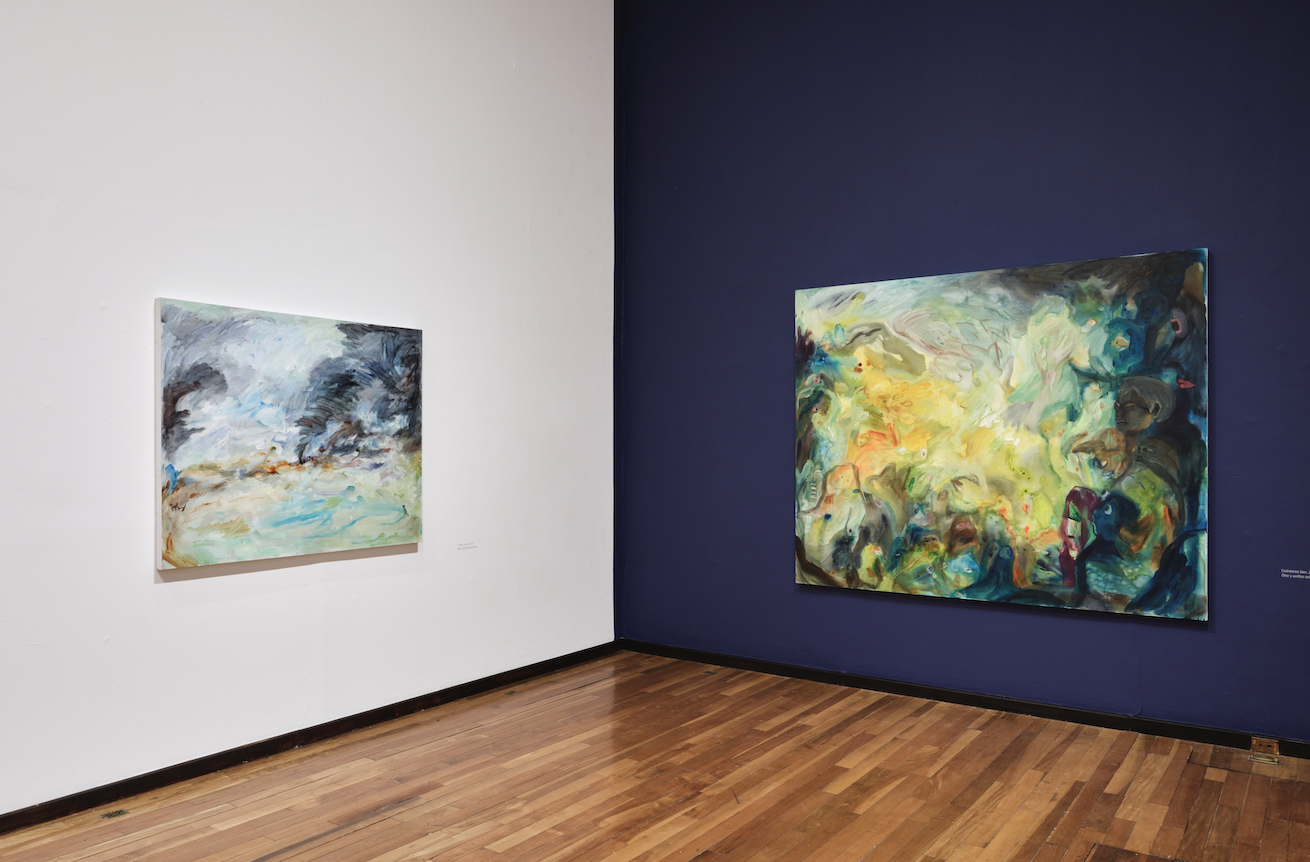

Lucia Vidales. The fire that does not produce.
“I have to bang my head against some hard door to call myself back to the body”. Virginia Woolf. The Waves, 1931.
Víctor Palacios
Curator
The enigma and fascination embodied by the representation of the human body is the essence of the aesthetic practice of Lucía Vidales (Mexico City, 1986). How to capture the corporeal through painting and drawing in a present increasingly dominated by digital technologies and virtuality? Lucía must have already banged on several doors to find answers and possible solutions to this question. What we observe here, first of all, is a transmutation of her own body and her tenacious will.
The present exhibition has as its starting point the artist’s interest in delving into the plastic language that José Clemente Orozco developed around the representation of the human figure. As a result, Vidales carried out a work of analysis and free interpretation of the graphic collection of this famous artist from Jalisco that is kept at the Museo Cabañas. Without pretending a parallelism or a tribute to JCO, this group of works seeks to establish a transhistorical dialogue around the emotive, violated, metamorphic and, therefore, political representation of the human body in the vast history of painting and drawing. This exhibition is therefore a site-specific exhibition.
The works gathered here allow us to appreciate the plastic and visual experimentation of this artist marked by an immense chromatic, luminous and expressive vitality enveloped by an unspeakable lightness or fleetingness. This contrast of intensities and temporalities not only operate on a perceptual level but also from a narrative and intellectual approach in which drawing and painting merge in the same field of action.
The representation of the female body stands out in disfigurements and scenarios that refer to the coven, the occult or profane, but also the grotesque, erogenous and caricatured. Heresy as an emancipatory process for women, as a struggle against ecclesiastical and male oppression in the Middle Ages. In this respect, the Italian writer, feminist and activist Silvia Federici points out, in her brilliant book Caliban and the Witch: Women, the Body and Primitive Accumulation, the following: “in the transition from the prosecution of heresy to the witch-hunt, women became more and more clearly the figure of the heretic”. The fire that does not produce, is the fire that gathers and congregates, that conspires and attempts against the established order and its terrible consequences… even in the present. The fire that purifies and renews. That is the fire that Lucia offers us here.